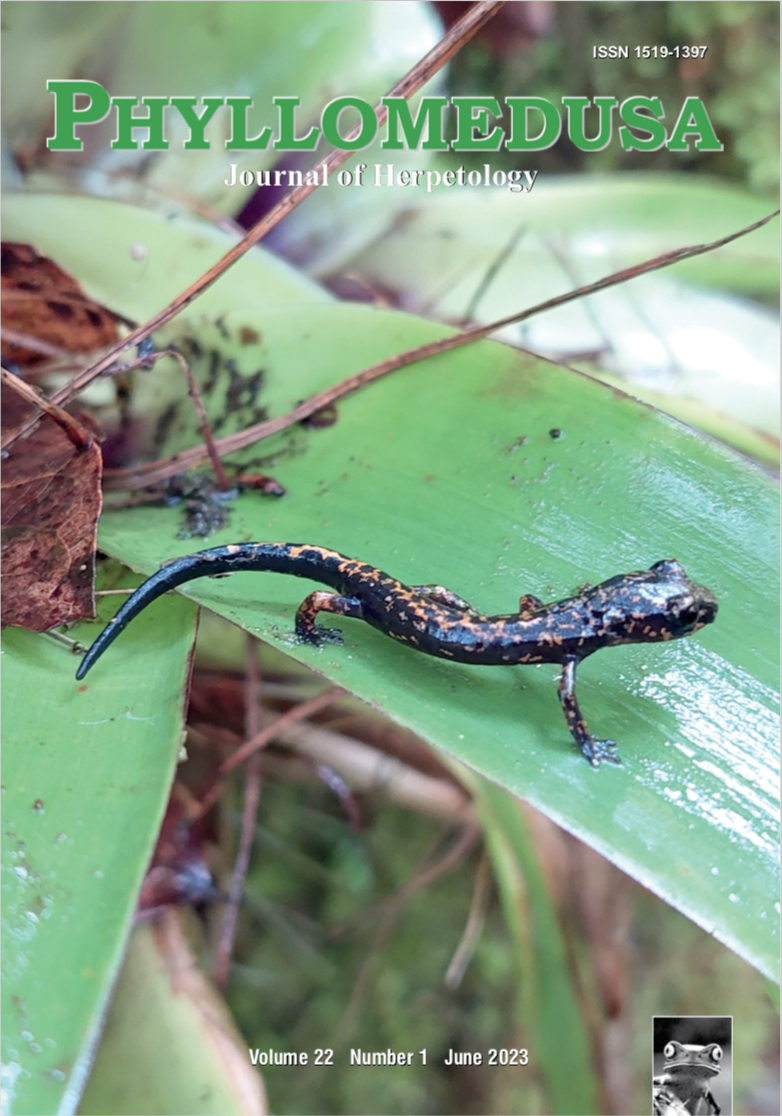Behavioral responses of tadpoles of Clinotarsus curtipes (Anura: Ranidae) to odor cues of dragonfly larvae
DOI:
https://doi.org/10.11606/issn.2316-9079.v22i1p11-20Keywords:
Amphibians, Antipredator behavior, Bicolored frog, Predator, PreyAbstract
In aquatic environments, many prey animals, including anuran larvae, predominantly use chemical cues to assess predation risk. In such systems, a variety of chemical cues (e.g., kairomones, alarm, dietary) affect the behavioral responses of the prey tadpoles. Many anuran tadpoles are able to discriminate different chemical cues and exhibit differential antipredator behavioral responses according to the perceived risk. The behavioral responses of tadpoles of Clinotarsus curtipes to predatory larvae of the dragonfly Pantala flavescens were studied in the laboratory. The predator’s kairomones (water conditioned by a starved predator) or its diet-derived metabolites released in excreta of a predator after consumption of conspecific (C. curtipes) or heterogeneric (Indosylvirana temporalis) prey tadpoles were used to simulate predation threat. The tadpoles of C. curtipes had no behavioral response to predator kairomones. However, the tadpoles showed antipredator behavioral responses i.e., reduced swimming movements and overall time spent swimming, and had a higher burst speed in response to water-borne cues released from the excreta of predators fed both conspecific and heterogeneric prey. The antipredator behavioral responses of tadpoles were most intense in response to cues of predators fed on conspecific prey. The findings of the present study show that tadpoles of C. curtipes are capable of assessing levels of predation threat and modulating the intensity of their defense behavior in accordance with the perceived threat.
Downloads
Downloads
Published
Issue
Section
License
Copyright (c) 2023 ESALQ-USP

This work is licensed under a Creative Commons Attribution-NonCommercial-NoDerivatives 4.0 International License.
All material originally published in Phyllomedusa belongs to Escola Superior de Agricultura Luiz de Queiroz - Universidade de São Paulo. All contents are under a license of Creative Commons BY-NC-ND.


 Impact Factor (JCR): 0.400
Impact Factor (JCR): 0.400 CiteScore: 1.0
CiteScore: 1.0